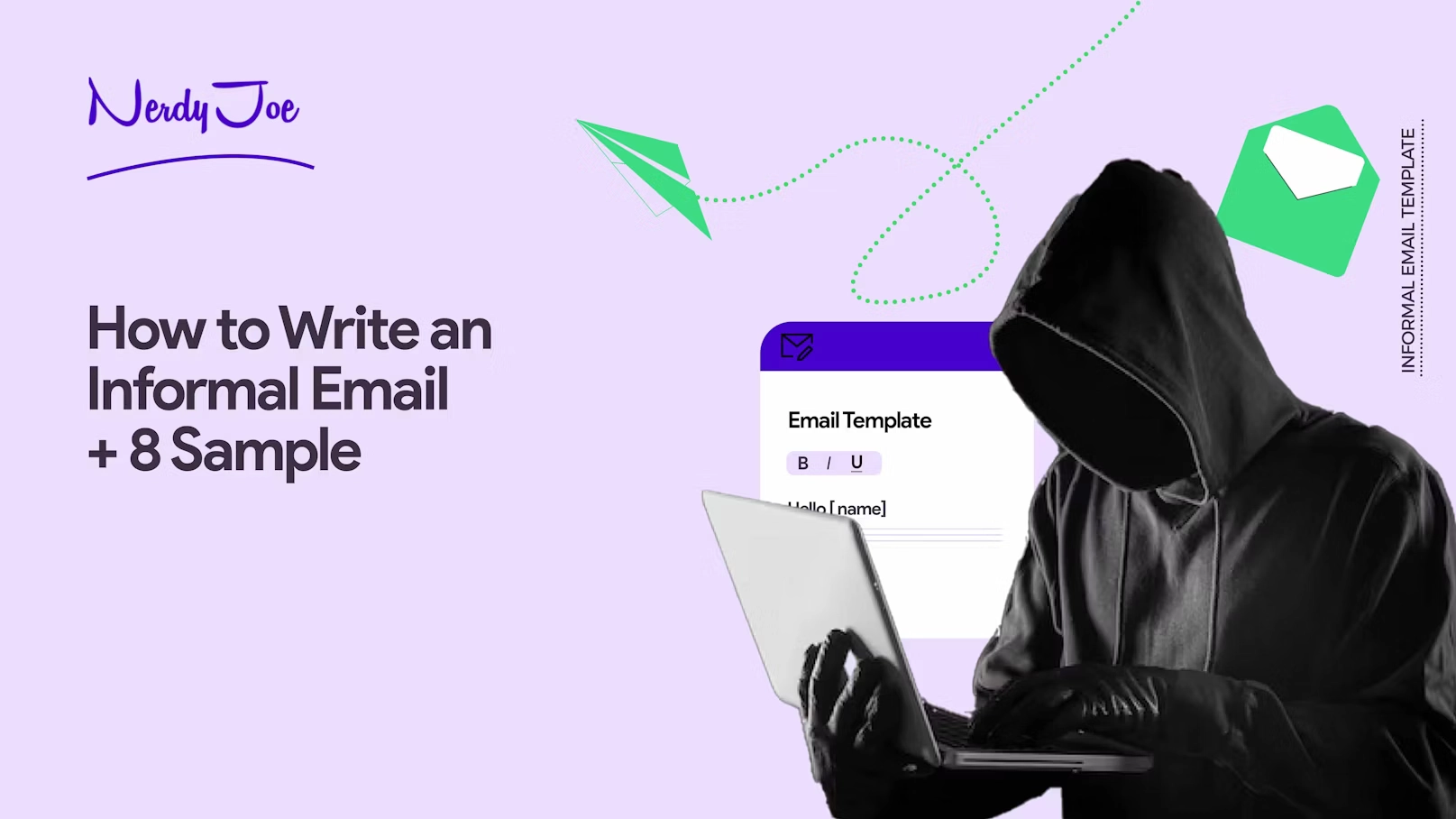Blogger outreach link building doesn’t have to suck. Outreach can be done at scale without feeling spammy.
About a year ago, when we launched our B2B lead generation agency, we wanted to grow through inbound marketing. So, we worked on a few blog posts on our website, and part of the strategy was to get backlinks from some established, high authority sites in the marketing industry.
So, we decided to run a blogger outreach campaign to acquire backlinks from some of the most popular websites and the most influential marketers already established in the industry. Basically, we targeted websites RevGenuis, Hunter.io, CoSchedule, Ahrefs, etc.
Here is a quick rundown of the answers we got from the people or marketers we targeted.
The answer we got from CoSchedule’s Inbound Marketing Director, Ben Sailer.

Here is the reply we got from ex-hunter.io Head of Marketing, Irina Maltseva.

Here is what we got from Ahrefs’ Head of Content, Joshua Hardwick.

We got some more. But, you get the idea, we did well. Very well, indeed.
In this article, we will show you the exact same process we used for our successful blogger outreach campaign and how you can emulate it. But first, let’s get the fundamentals out of the way.
What exactly is blogger outreach link building?
The idea of blogger outreach link building is to get backlinks from other sites that are more authoritative and have topical relevance to yours by sending them outreach emails.
Basically, this involves developing a strategy to convince them to link to your site. This could be pitching them a guest post idea, asking them to remove broken links and update them with yours, Brian Dean’s skyscraper strategy, link swaps, etc.
The next step is to write a beautiful cold email with a compelling offer and pitch them your idea. You write the outreach email in such a way that they see how you can mutually benefit from linking and lay in value and tactics to compel them to take your desired action.
To be successful, the blogger outreach campaign must be a win-win for you and your target.
For example, you get a link on their website, which can lead to more exposure for your brand and more SEO benefits, such as increased domain authority, better rankings, more traffic, and more business overall.
In turn, the site hosting your link publishes a new and fresh solution or content on their site that their audience will benefit from or enjoy in some way. So, more experience for their audience and SEO benefits for them.
Why do most companies, teams, or outreach specialists suck at blogger outreach?
Most web admins or site managers hate blogger outreach. And they hate random link-building emails even more. That’s because most people’s blogger outreach link-building approaches lack genuine, well-planned targeting and just SUCK.
Most people’s blogger outreach strategy is to send tons of templated cold emails to strangers whose email addresses they’ve scraped from a data intelligence tool.
From what they offer the other site to their way of doing it, everything sucks — basically — and in most cases, they get answers like this.

Of course, it comes as no surprise because they come across as spammers.
There are two blogger outreach strategies or approaches that marketers use. The approach you use determines how everything plays out and the results you get. Let’s discuss each approach.
The two link building outreach approaches are the sniper and shotgun approaches. Let’s start with the shotgun approach.
The shotgun approach
The shotgun approach is a mass outreach strategy where you send a large volume of generic, impersonal, cold emails to a broad range of bloggers.
Proponents of this approach believe it is easier and less time-consuming than the sniper approach — which is why most people tend to embrace it.
What they actually do is sacrifice quality in the name of scalability, and the approach typically results in a lower response rate, deliverability issues, and lower-quality backlinks.
This mainly has to do with the fact that the cold emails are templates sent to too many people and can’t be personalized to make an impact.
First, you are sending a cold email. Your targets didn’t know who you were whatsoever. You have that playing against you already. Plus, the fact that your email is generic and brings nothing special kills any chance you had. It also says a lot about the person that sends them.
- You’re selfish.
- You’re lazy.
- You don’t give a damn about them or their business.
Here is an example of a blogger outreach cold email we received.

That’s a shotgun approach. We can easily see that the email is designed to be quickly sent to thousands of people without too much editing, and it just reads terribly.
Also, that link building outreach will — for sure — result in poor outcomes because before someone accepts your link to their website, they need to know that you:
- Studied who their target audience is and what they love to read.
- Studied the type of content they create and share on their blog and social media profiles.
- Took the time to determine that they (or their website) are relevant to your niche.
- Bringing something of value, such as a guest post, a discount code for their readers, or any other incentive to their table.
- Wrote a personalized email explaining why you are reaching out and what you hope to achieve through the collaboration.
- Are not just reaching out to get a link and call it quits.
- Etc.
The key to succeeding in a blogger outreach campaign is to prove to the target web admins that you are a genuine, serious marketer bringing exciting benefits to their site.
But how do you do that? The snipper approach.
The snipper approach
As the name implies, the sniper approach is a targeted, personalized outreach strategy where you carefully research and select specific blogs or websites to reach out to.
With this approach, you craft personalized, well-researched cold emails tailored to each website owner’s needs and interests.
The aim is to establish long-term relationships with high-quality bloggers in your niche. It takes time to research and requires a well-thought-out strategy to succeed, which is why most people find it challenging and would rather shoot at every site they find (you know, Shotgun).
But here is the kicker: If you were to send 800 cold emails to convert one prospect or 30 well-crafted and personalized cold emails to still convert one, what would you do?
Don’t lose sight of the facts that while you send 800 cold, generic emails, you will get reported for spam, damage the sender’s reputation, and most of your emails will go unanswered and unread.
So, which is it?
Well, we will choose the “30 well-crafted emails” deal every day because it’s worth it. That’s the approach we use and advocate at Nerdy Joe. That’s how you get answers like these:

5 steps to get backlinks with a well-crafted blogger outreach campaign
First thing you need to know is that our link building strategy is guest posting, and we use the snipper approach — that’s how we know blogger outreach works.
Here are five steps you need to follow to create and run a successful blogger outreach link building campaign.
Step 1: Find your target websites
The first step in your outreach strategy is finding the websites you want to target for link building. For this, you must have some criteria about the websites you get the links from. Let’s detail this.
Have criteria about who you want to get links from.
First thing you need to know about blogger outreach link building is that you cannot target everyone. The idea of acquiring backlinks from other sites is that you want the other sites to help promote your own in some way.
Ideally, you will want to:
- Increase your domain authority (DA) or domain rating (DR)
- Increase traffic to your site
- Build niche/topical authority
- Increase your search engine rankings
- Etc.
And so, based on your goals, you cannot reach out to every site that’s available to you to get links from. Getting backlinks from a website with less SEO value than your own will not benefit you.
- If you want to increase traffic to your website, you will want to host your guest post on a website with massive traffic.
- If you want to increase your domain authority and improve your search engine rankings, you will want to get backlinks from websites with massive traffic and domain authority.
- If you want to build niche authority, you can get backlinks from other websites in your niche (not your competitors) with a bigger domain authority than you do.
Keep in mind that whatever site you target with your blogger outreach strategy needs to have a topical relevance with your own, and you somehow need to be addressing the same target audience.
For example, Hunter.io sells a tool that helps people get the email address of their target leads so that they can reach out to them via email. Our company offers outbound lead generation services plus email marketing.
That means that our company can find value in having our content hosted on Hunter’s blog since the reader might be interested, and they can hire us to do lead generation for them.
Also, from a Google standpoint, it makes us a good match since we both talk about lead generation and email marketing on our respective blogs.
Build a list of your target websites in a spreadsheet
If you set your goals and have all your criteria sorted out, there will be only a handful of blogs or websites you will be happy to get backlinks from.
Here is how to find those websites — with both topical and audience relevance criteria in mind.
How we do it
Our way of building target website lists could be faster, but when we decide to use the list, we are sure that we have built a list of qualified websites that are aligned with ours.
This is a long-term planning approach, and the main reason we are able to do this is that we don’t rush. We build the list gradually as we write articles on our blog. Here is how.
Before we write an article, we usually go to Google to do some research to map out the article. And there, we discover other sites that cover the same keywords.
If we find the site interesting, the next step is to find out what service or product they offer to ensure it’s not a competitor and that the audience is relevant.
This can be figured out just by reading the content on their homepage. The next step is to quickly check the website’s domain authority. Thanks to the Moz Chrome Bar Extension, we can do this in an instant.

From there, we can clearly understand the website’s overall strength and whether we are interested.
Keep in mind that this is not a strategy we have specifically designed to identify websites to target for our guest posts. No.
This is all happening while we write other articles for our blog. When we find an interesting site, we file it in our spreadsheet and move on.
And the day we decide to run a guest posting blogger outreach campaign, we know where to find our targets. Here’s an example of how we keep them lined up in Google Sheets.

So, that’s how we eliminate the sweat when finding the websites to reach out to for blogger outreach link building. But since this is not something you had planned, there are other ways to do this.
Other ways you can do it
- Keyword research
Identify keywords related to your niche and use them to find relevant websites and blogs that cover similar topics. You should use an SEO tool for this. We recommend Ahrefs’ Content Explorer.
- Competitor analysis
Look at the websites that link to your competitors’ websites and consider reaching out to those websites for a guest post opportunity. Here also, you’ll need an SEO tool. We recommend using Ahrefs’ Site Explorer.
- Google search
A simple Google search can also help you find authoritative sites that discuss the same topic as you and you can target them. Use Google search operators such as “guest post,” “write for us,” and “submit a guest post” to find relevant websites in your niche that accept guest posts.
- Industry events and conferences
You can attend industry events and conferences and network with bloggers and websites in your niche.
- Personal connections
Reach out to your network and ask for recommendations for websites in your niche that accept guest posts.
Step 2: Find who to reach out to, find their email address and build a list
By now, you’ve already created your list of the websites you want to target. At this point, you want to figure out the right person to contact at each of your target companies to get your cold email acted upon.
Ideally, you want to reach out to the person in charge of the blog or someone in the position to understand the value you are bringing to their table and with authority to act upon your email. In most cases, that comes down to the following positions within the company:
- Head of Content
- Content Lead
- Content Marketing Officer
- Content Marketing Manager
- Head of Marketing
- Content Marketing Specialist
- SEOs
- Etcetera.
Here is how to find the person to contact at each company.
Using the company’s website
The best place to find the people working at a company is on their website. Head over to their team, about page, or career page and find the best position to reach out to for your needs.
Let’s take Ahrefs, for example. Go to the site. Scroll down to the lower fold of the page. Ideally, you are looking for these keywords Company – About – Team – Career – People.
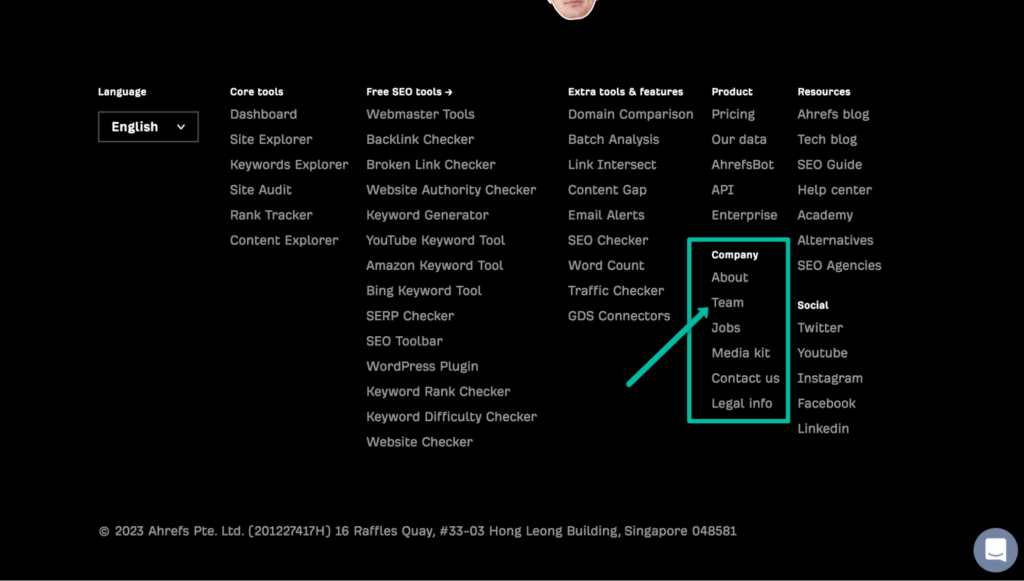
Then go to the page to see the team and find the person you are looking for.

Using their blog
Sometimes, the company might not have a team page on its website to list the people working there and their different titles. An alternative tactic is to look at the company’s blog.
Here, you want to find the name that publishes the most content on the blog. The person with the most content on their name will likely be the content team’s head.
And even if they are not, they are still the right person to contact because they can easily link you with the manager you’re looking for. Let’s take the SparkToro blog as an example here.
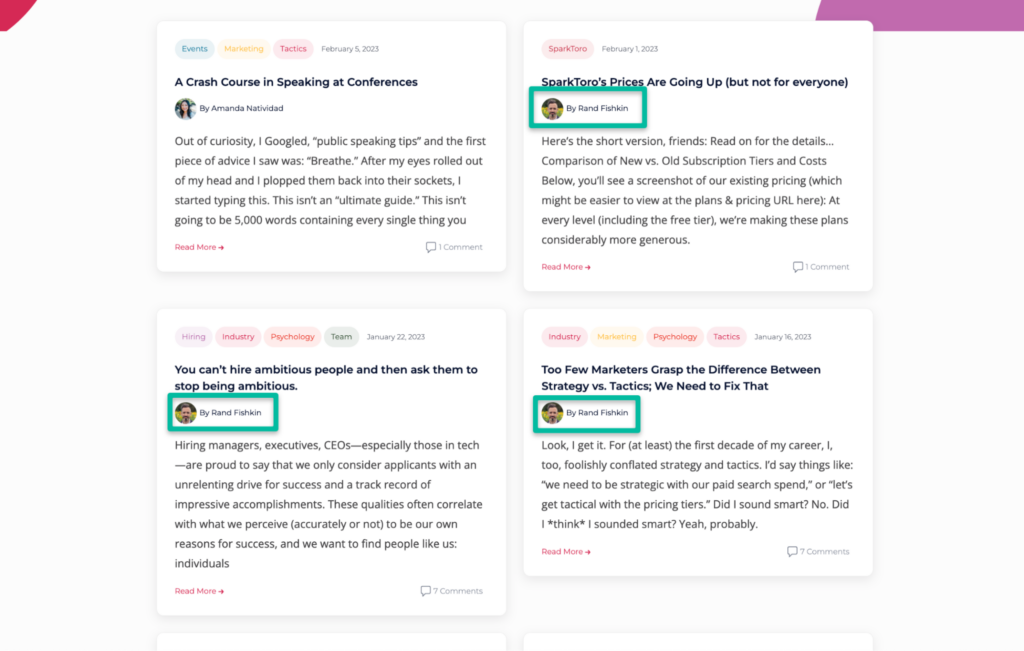
Clearly, you’ll have a good chance of being heard if you reach out to Rand Fishkin.
Using LinkedIn
Go to your target website’s profile on LinkedIn and head over to their employee section to search for the position you are looking for to find the name you need. Suppose we are targeting Ahrefs.
Step one, going to Ahrefs’ profile on LinkedIn.
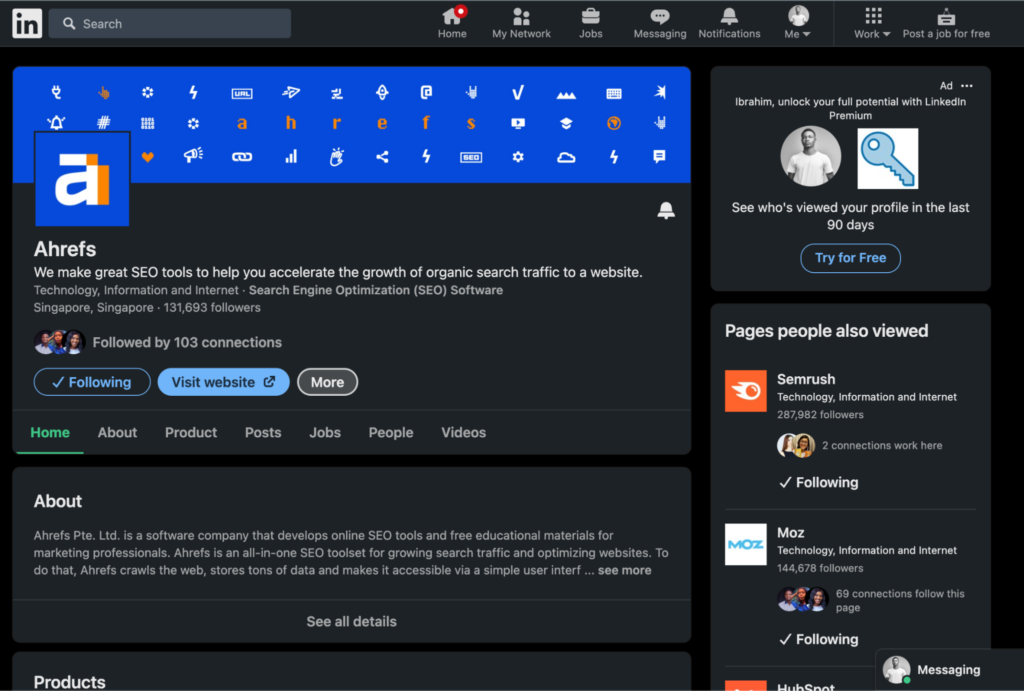
Step two, click on “Employees” or “People” to find the people working there.
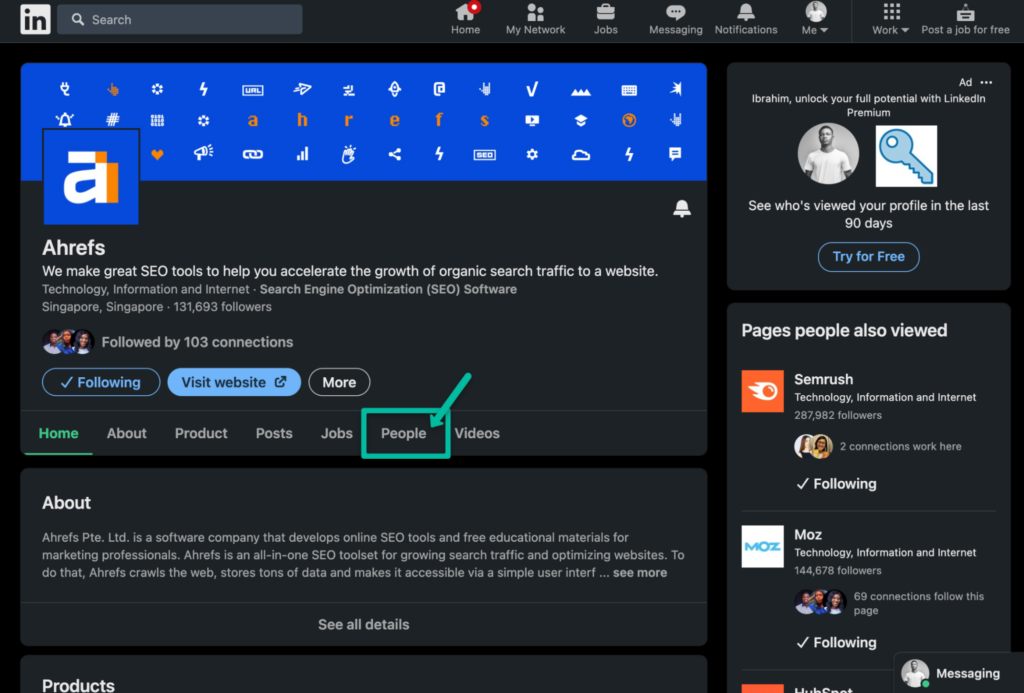
Here are the different people working there.
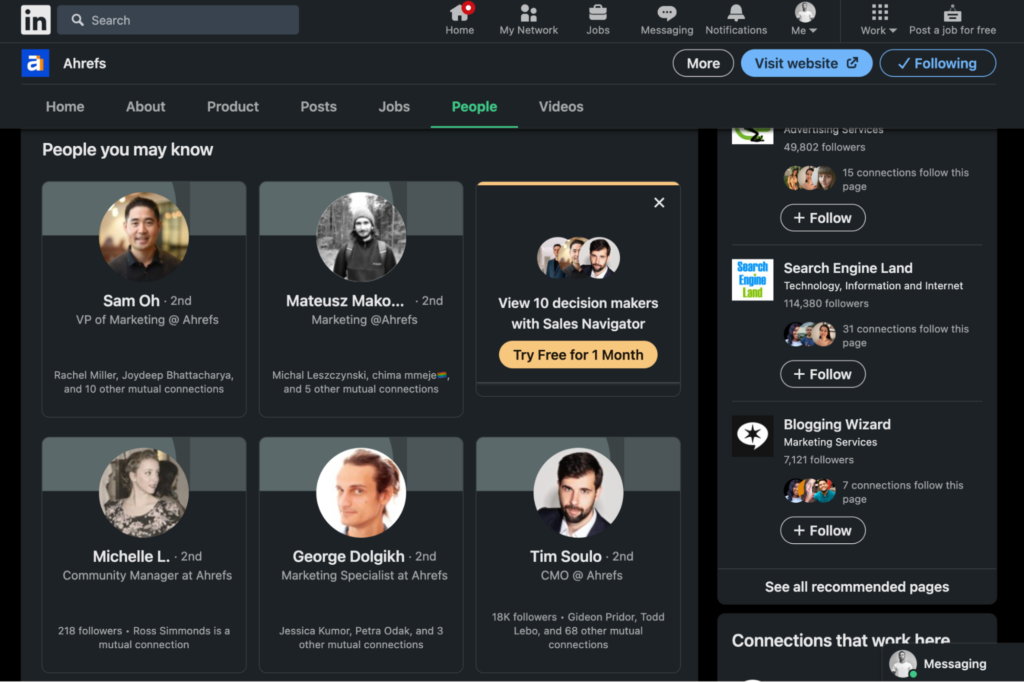
Now you want to search keywords such as:
- Head of Content
- Content Lead
- Content Marketing Officer
- Content Marketing Manager
- Head of Marketing
- Content Marketing Specialist
- SEOs
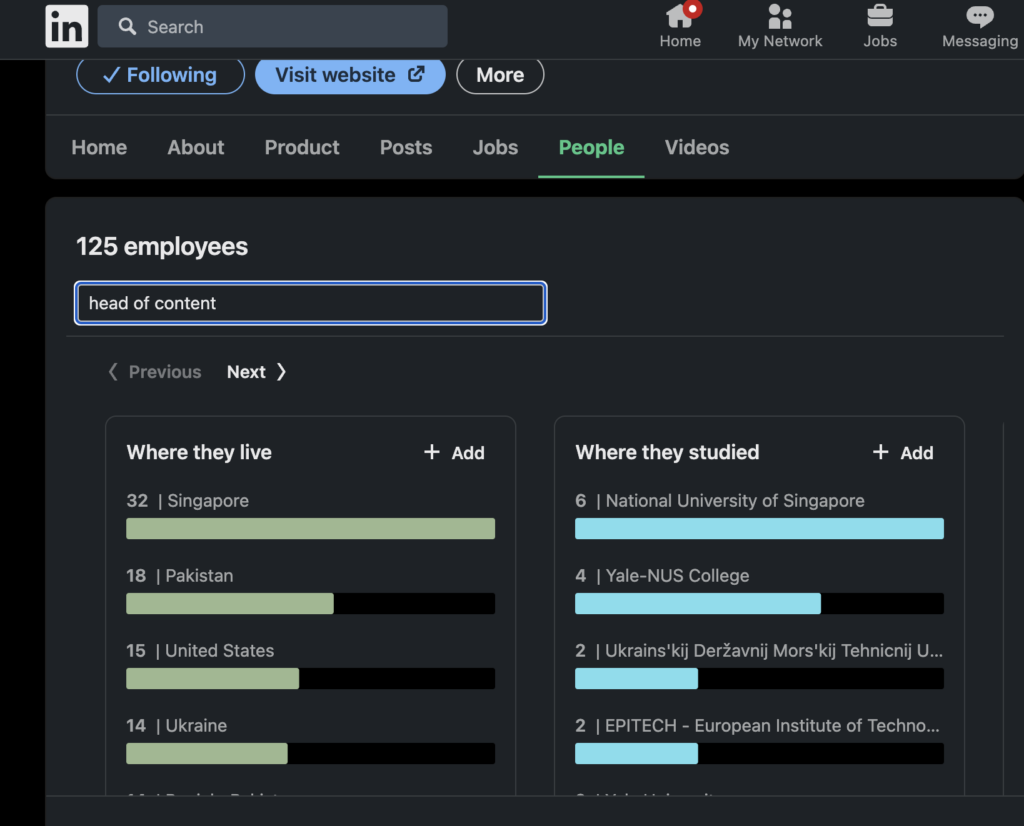
Here is the result.
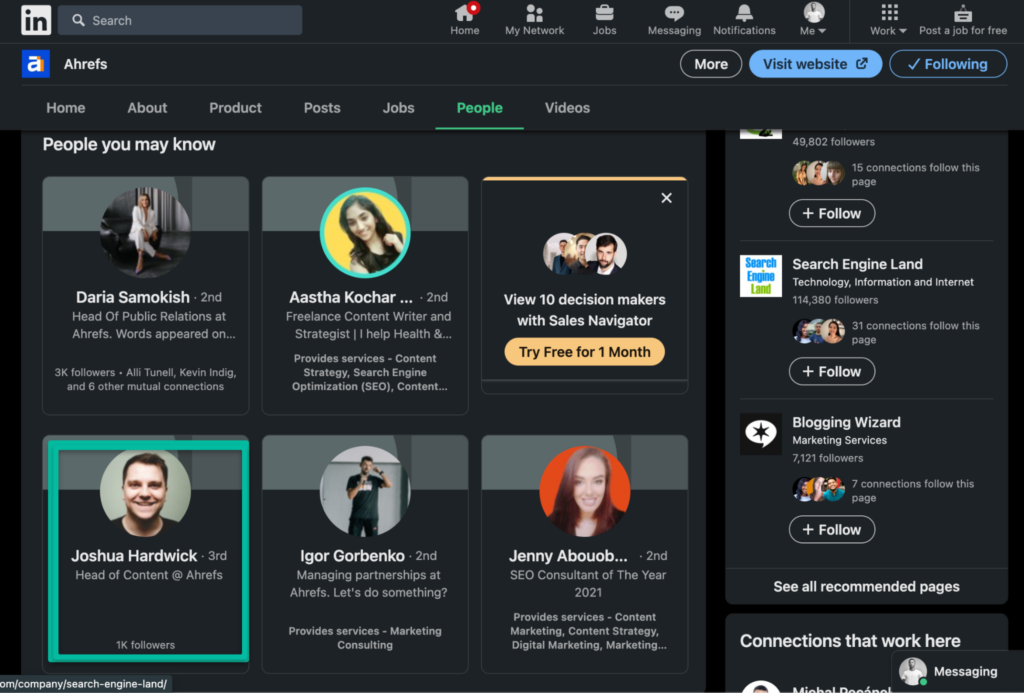
Find their email address using Hunter’s Email Finder
You’ve got your target’s name and the company they work for. Go to Hunter’s Email Finder to find their email address easily.

Suppose your target’s name is Ibrahim Litinine, and they’re at Nerdy Joe (nerdyjoe.com).
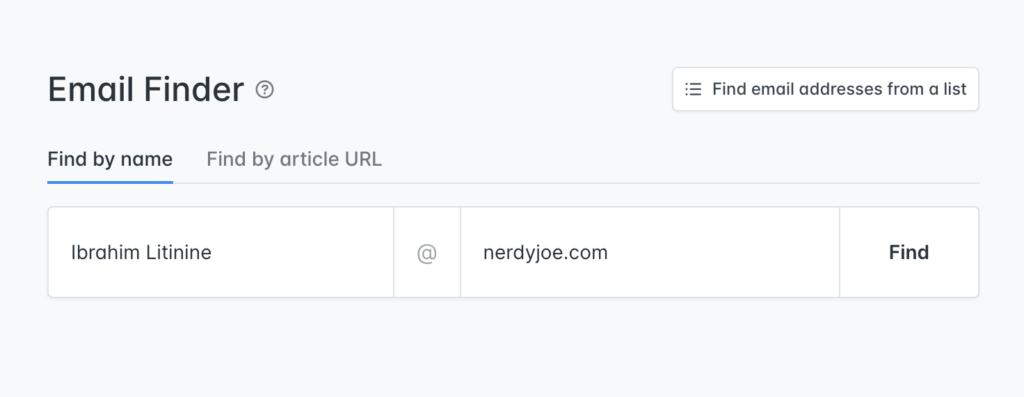
Hit the find button and get the email address.
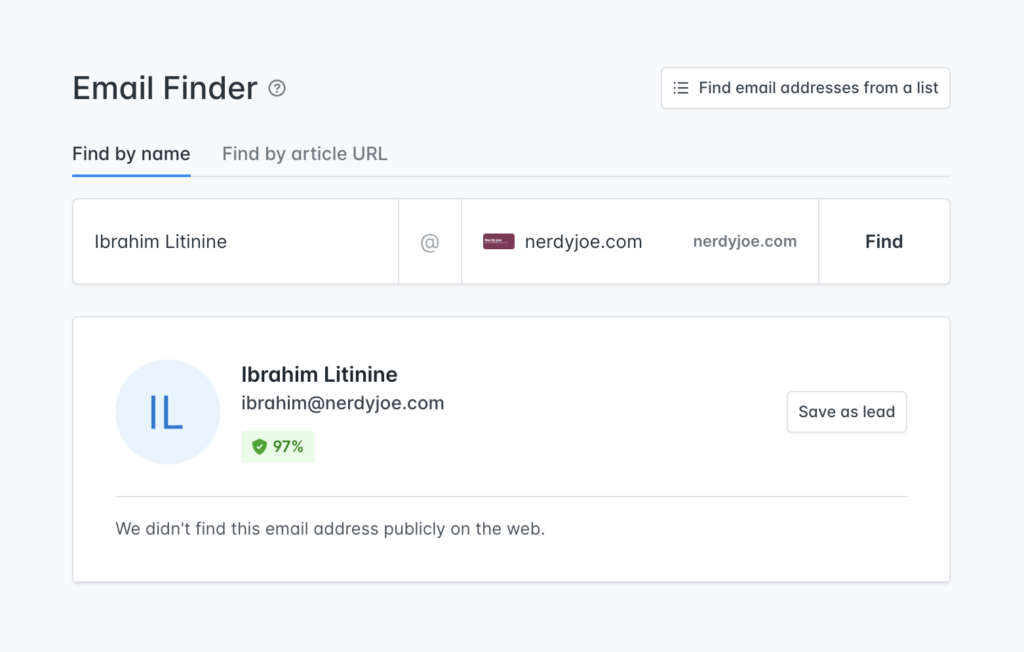
Here is a screenshot example of how we keep everything lined up before our campaign.
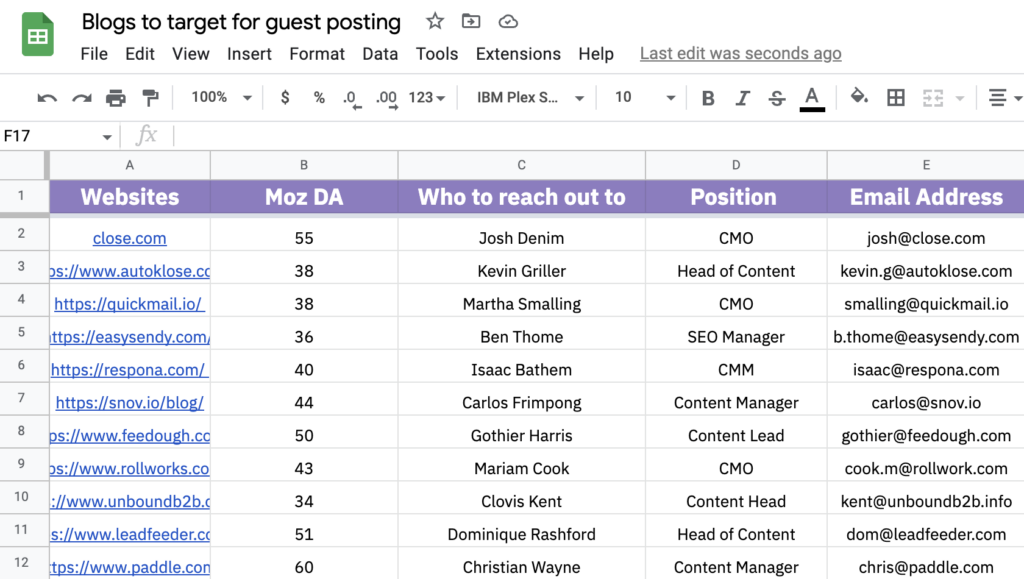
Note: If you can’t find the email address this way, we share more tactics for finding someone’s email address here.
Step 3: Come up with a guest post content idea
You have your target websites and the accounts to send the cold emails figured out. Now, you need to find out what type of content you want to offer them so that they say yes.
Do it right
The first thing you need to do here is research their website and thoroughly understand the type of content they publish and how they write it.
You’ve probably done some good research before choosing your target website in the first place. But here, you must ensure that whatever content you bring to their table is aligned with their philosophy, target audience, overall business and marketing goals, etc.
Simply put, your suggestion can make or break your link building strategy here. You can’t guess it. Research and come up with an excellent content idea.
Also, offering basic, what is, 800-word guest post ideas won’t cut it. That will sound like you are simply reaching out to whip up something that gets you a backlink without offering any real value in return. The content idea you pitch needs to be “dope”.
Here are the two blogger outreach guest post content ideas that work for us.
Offer evergreen case studies
This is our go-to strategy at Nerdy Joe. When it comes to guest posting outreach, our main and most successful approach is to offer to create a case study for our target website. They are the easiest way to convince someone to let you post on their website.
I mean, who doesn’t want to have a solid teardown of a company’s success case or marketing strategy on its website? It always works like a charm. Here are a few we’ve published over the years.
On CoSchedule.
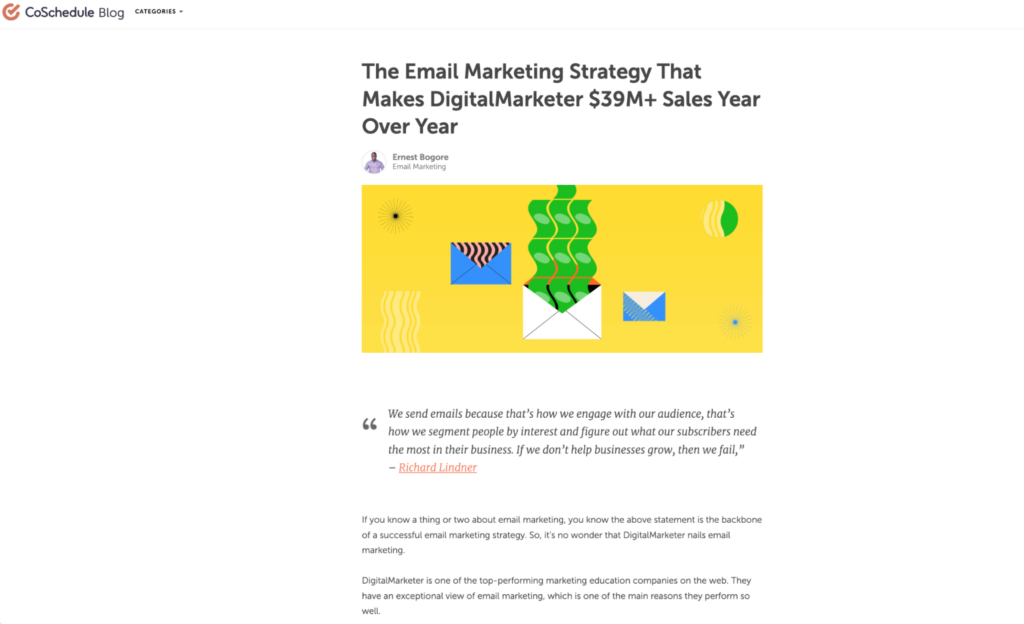
On RevGenius.
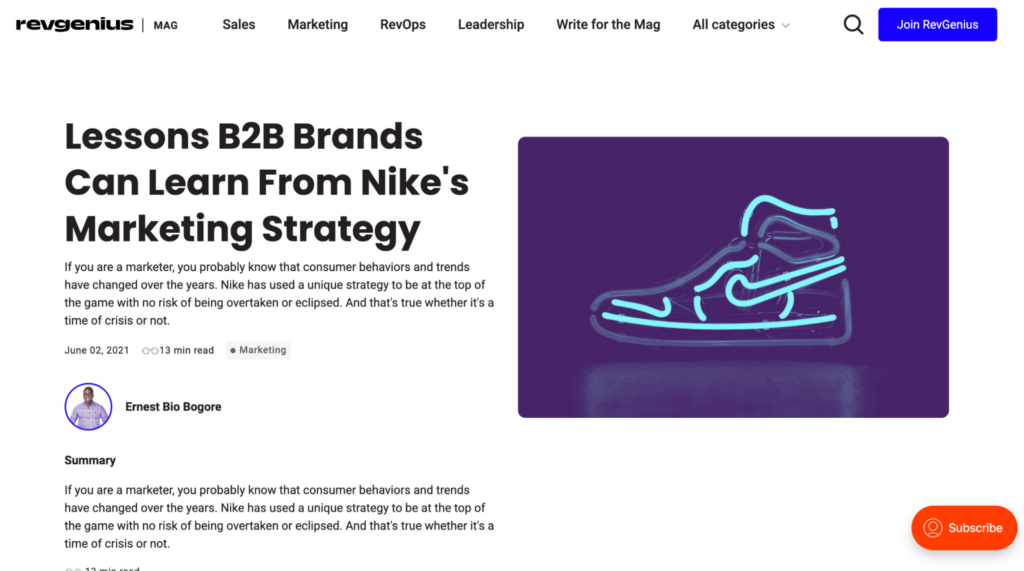
On Encharge.io
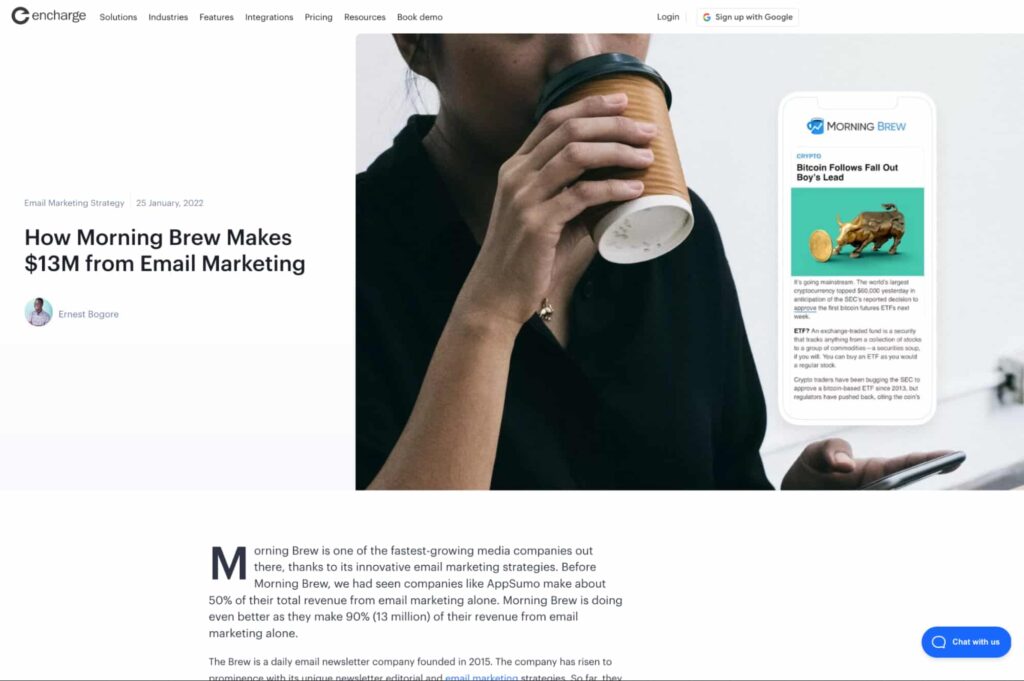
On The Good.
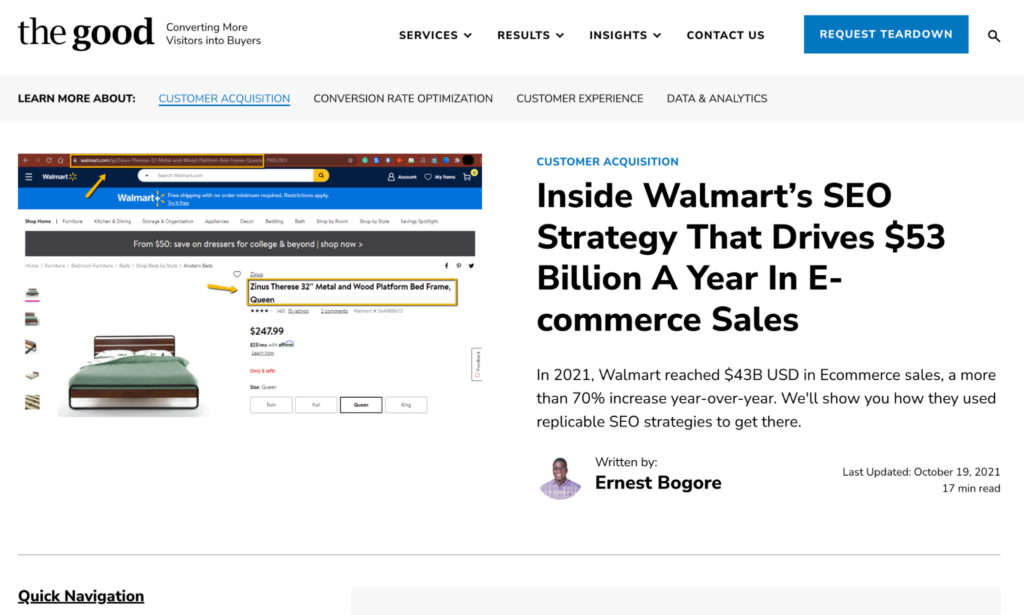
There are more. The main point of these examples is to show you that creating case studies and pitching them for guest posting works, really.
Offer guides
Step-by-step guides also work really well for pitching guest post ideas. The target website’s audience will learn something specific, and they can genuinely benefit from the content.
Here are a few examples that we did.
On Hunter.io

On Vidico.
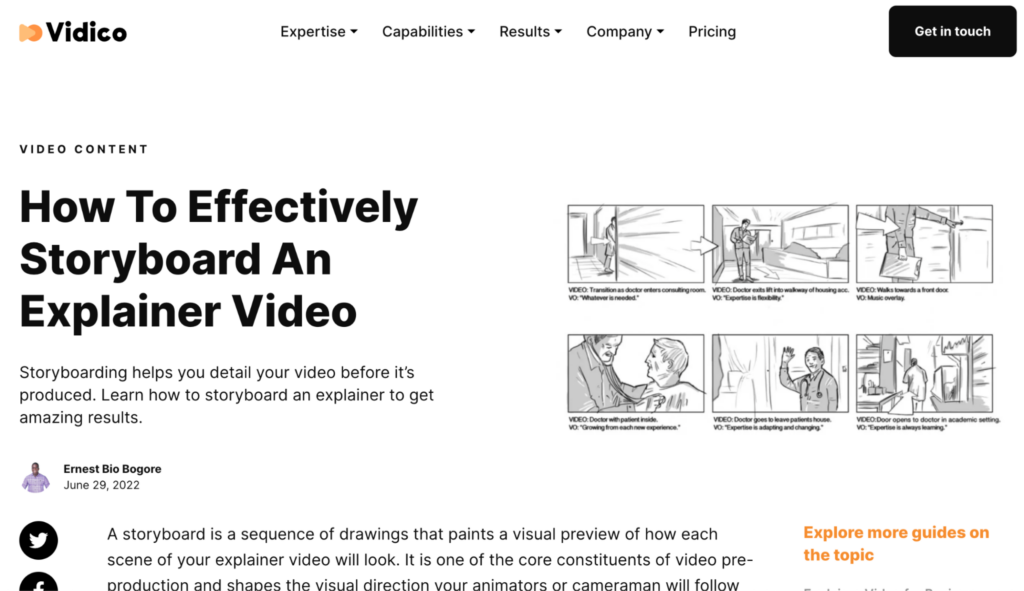
Step 4: Craft your cold emails
This step is where you write your cold emails. There are three steps to that.
Create icebreaker opening lines
The target prospects included in your blogger outreach campaign don’t know who you are. There is also a good chance they’ve never seen your website before.
So, you are coming into the unknown, and you need a good first impression to catch their attention and hook them to read your cold email.
Simple cold email opening lines like “I hope this email finds you well”, “Allow me to introduce myself”, etc., won’t cut it.
What you need is an icebreaker. As the name implies, icebreakers are email opening lines designed to help you break the ice between you and your recipients.
Here are the different things having an icebreaker means for your outreach:
- an opening line that doesn’t strike the recipient like “I’m here for a backlink; otherwise, I wouldn’t be here.”
- an opening line that rapidly differentiates you from other link building emails and hooks your target webmaster to read your email.
- a beginning sentence that makes your recipients feel valued and states that you did your research before reaching out to them.
- a phrase that indicates you know them personally and conditions them to be more receptive of your email and offer.
So, instead of simple greeting opening lines, you take it a step further and bring exciting facts about the recipient to personalize the opening line and make it more impactful.
And that’s how you can go from an email opening line that reads like:
“Hey, Ben
I hope this email finds you well.”
To an icebreaker that reads like:
“Hey, Marc
I was listening to your podcast with Xavier, and I have to admit that the take you had on marketing and sales alignment is pretty interesting.
Nobody ever talks about how marketers have very little knowledge of the target audience’s actual needs and only make decisions based on guesses. More people need to hear this.
Also, I was playing around with your website and noticed that your content mainly covers email marketing services.
I have an idea for a case study about a cold email campaign we run that I think your audience will love. I took the liberty to create a map of the content here {link}”.
Oops, I almost wrote the entire email. But it is interesting, yeah?
But how do you do it?
Well, glad you asked.
- Watch interviews and podcasts your target audience has participated in.
- Read blog posts and thought leadership articles they wrote or contributed to.
- Read their comments and posts on LinkedIn, Twitter, and Mastodon.
- Read their company’s new mentions.
- Etcetera
You then combine the information you collected to find unique angles and craft personalized first lines or icebreakers.
Here is an example of keeping it all in a spreadsheet before the campaign.
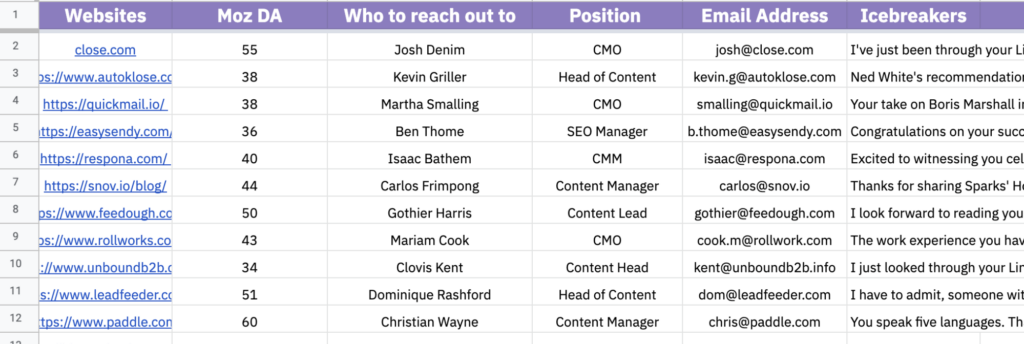
Craft a compelling subject line
The subject line of your blogger outreach email is the first thing your target blog manager will see. It’s crucial to get it right to pick their attention and get them to open your cold email.
A compelling subject line can make all the difference between a blogger outreach email that gets read and acted upon and one that gets ignored.
Your goal is to craft a short phrase that catches your prospect’s attention and gets them interested in reading your cold email.
You can do this by striking curiosity, bringing an interesting fact about their website or blog, complimenting them, etc.
Here are some examples of best email subject lines we use in our link building efforts:
- Collaboration opportunity: [Blog Name]
- A [Niche] guest post that’s going to make waves
- A valuable resource for your readers: [Your Website]
- Join forces with [Your Website] for [Niche] domination
- Ready for a [Niche] adventure with [Your Website]?
- Let’s add some [Niche] sparkle with [Your Website]
- Partnering for [Niche] success
- A unique [Niche] guest post proposal
- Sharing [Your Website] with [Blog Name]
Here are some do’s and don’ts for your blogger outreach cold email subject lines:
- Do keep it professional.
- Do keep your subject line short and to the point. A subject line that is too long will be cut off and may not get noticed.
- Make it fun.
- Do make your subject line personal and relevant. This will make it more likely to catch the attention of your prospect.
- Do show your target why collaborating with you is a great idea.
- Don’t use all caps or excessive punctuation. This can make your subject line appear spammy and unprofessional.
- Don’t use generic, vague, or boring subject lines. A subject line like “Guest post request” is unlikely to get much attention.
- Don’t include any spam trigger words. Using such words in your subject line can get your email into the spam folder.
Create a personalized email for each prospect
We believe in not sending the same email copy to two different people. We believe every prospect in our list is different and has unique needs and goals for their website.
So the same offer or email won’t resonate with all of them; that’s why we create a different email for every person we target.
Here are some elements you can include in your cold emails to make them compelling and easily win backlinks.
Prove that you know them
Personalization is a non-negotiable aspect of your emails here. If you can’t make the recipient feel like you know them personally, don’t send the email yet.
Prove your value
Believe it or not, marketers or website owners usually have strong egos and are very meticulous about who they collaborate with. Because of this, you may need to convince them that you are not just another spammer landing in their inbox.
You do this by creating a compelling, super-personalized, and meaningful outreach email. Everything inside your cold email needs to be excellent and hook them. From your tone to the content idea you offer to create. You need to win against their ego.
Explain why you’re reaching out to them
You’ll need to highlight and detail the unique offer you’re bringing to their table and how it will be beneficial to their website and target audience.
Hint at a relationship
You don’t want your recipients to read your pitch and feel like you’re just reaching out to get a link and disappear. Show them that you’ll continue to engage with their content and offer to help with future projects. This will even help to strengthen the relationship and increase the likelihood of future collaboration opportunities. Both parties will benefit from this.
Create a sense of urgency
Creating a sense of urgency in your email can help motivate the recipient to take action. For example, you can simply let them know that the collaboration would be especially valuable for you at this time. You only need to be subtle about this, don’t make it that much of an ask.
End with a call to action
Of course, you’ll want to end the cold email with the clear next step you hope for your potential collaboration. Just let them know what action you want them to take and lead them on with a clear ask in your email.
Step 6: Send your cold emails and follow up
You won’t get any results unless you send the outreach emails. So, send your emails and keep track of the bloggers you’ve reached out to and the positive response rate.
If you get positive feedback from your outreach, work on creating excellent content for them. It’ll make them fall in love with you, and you can win even more backlinks from their network.
Also, you need to make following up an integral part of your strategy. CMOs, Content Leads, and SEOs, are really busy people striving to bring results to their websites.
So, don’t be shocked when your emails go unanswered. You need to have follow-ups ready to reiterate the previous emails and give them a nudge to act.
Get help with your blogger outreach link building
There you have it. Most link building blogger outreach campaigns fail to deliver good outcomes. But it does not have to be that way.
At Nerdy Joe, we have perfectioned the best blogger outreach styles and tactics to reach out to influential CMOs, and content team leads to get backlinks from their sites.
If you need blogger outreach services, here is what we can help you with:
- Finding target websites to get quality backlinks from.
- Target account research and list building.
- Coming up with the best pitch ideas and ideating them.
- Craft the outreach campaign emails and get your results.
- Get your content posted and bring you backlinks.
Ready to ace your backlink blogger outreach strategy? Talk to us.
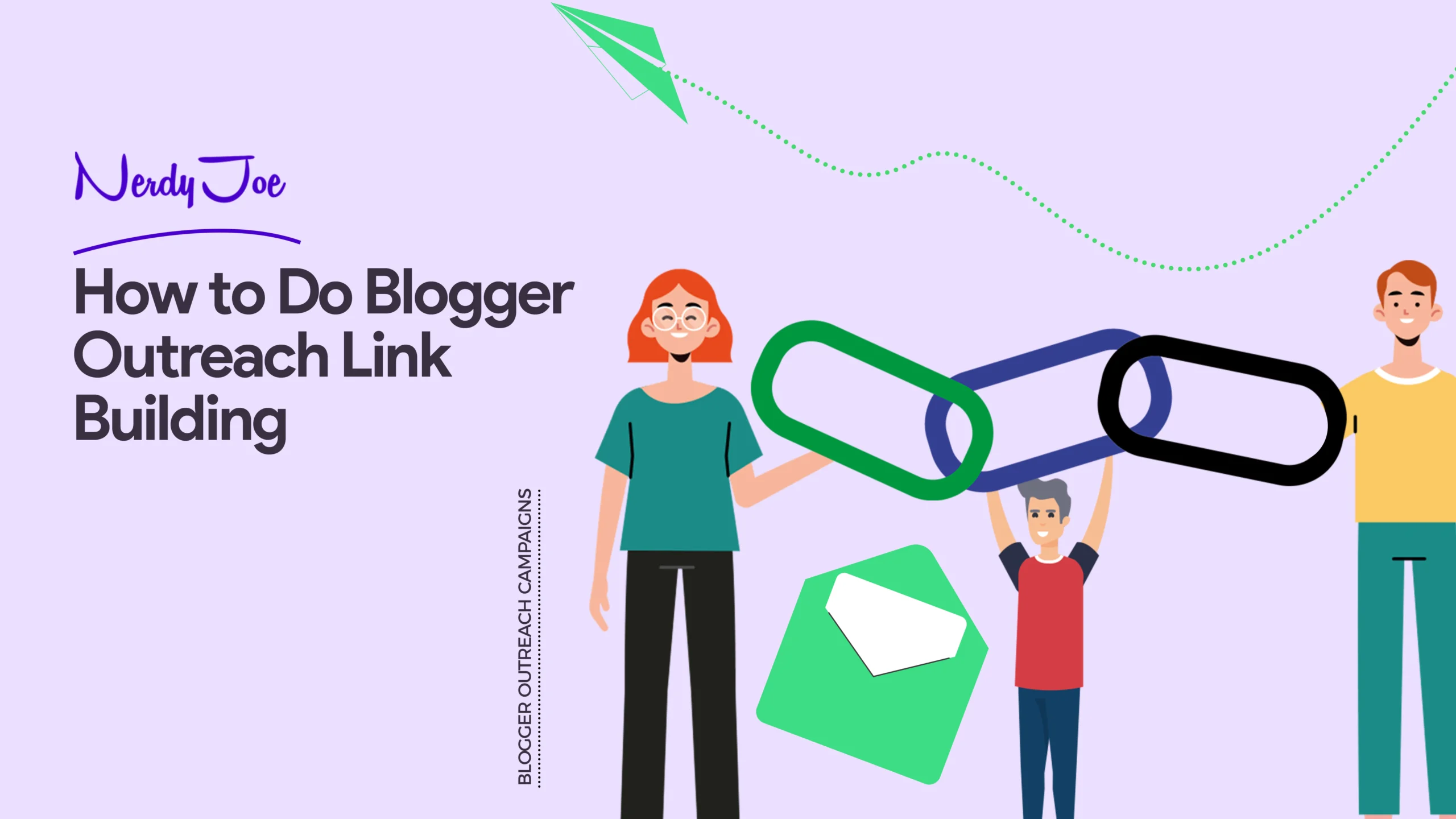

![How to Generate B2B Leads With Cold Outreach [Case Study]](https://nerdyjoe.com/wp-content/uploads/2024/06/1669218674-artboard-1-copie-4-3x-1-scaled.webp)
